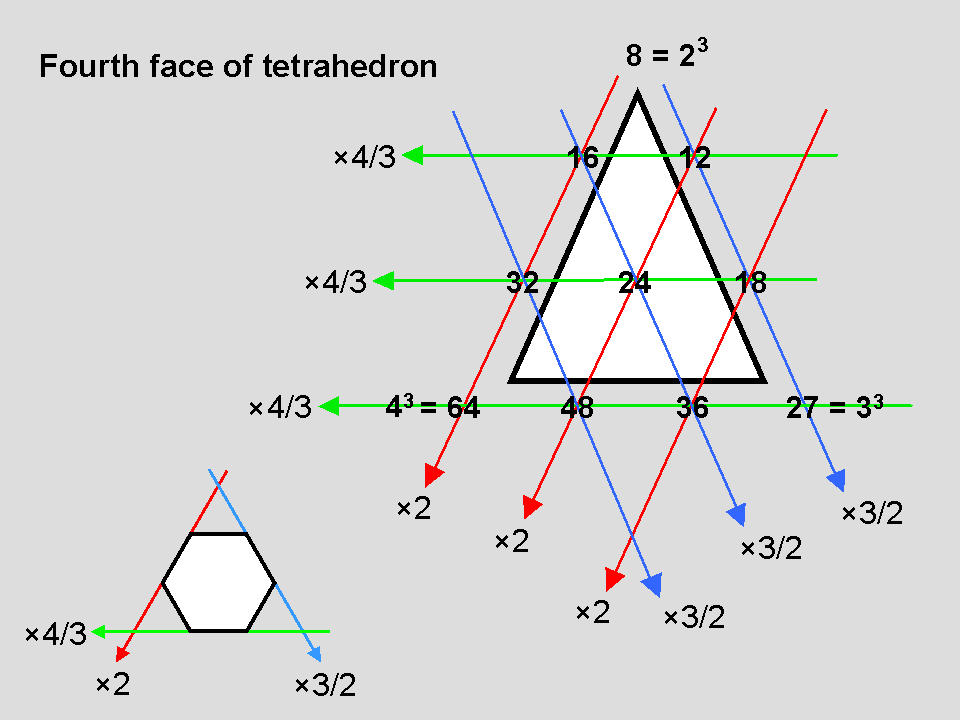
| << Previous 1... 6 7 [8] 9 10 ...45 Next >> |

The fourth face of the Tetrahedral Lambda is a tetractys array of 10 numbers whose pairings parallel to its three sides create octaves, perfect fifths and perfect fourths with, respectively, the tone ratios, 2/1, 3/2 and 4/3. Its hexagonal symmetry means that, when this tetractys is extended in the traditional manner of the Table of Nichomachus, every number becomes surrounded by six others that are either octaves, perfect fourths or perfect fifths. We now have rows of integers defining the tone ratios of these notes that are parallel to all three sides of the tetractys array that generates them. All the numbers may be divided by any one of them to generate the same lattice of tone ratios of the Pythagorean scale, e.g., the infinite, hexagonal lattice of numbers is invariant with respect to such division. Of course, as only their ratios define actual tone ratios of musical notes, this infinite array of numbers may be divided by any number and it still generates the tone ratios of all octaves of the Pythagorean scale. This may suggest that the numbers themselves have no significance — only their ratios. This is true as far as tone ratios are concerned but untrue when the sacred geometrical counterparts of the Tetrahedral Lambda are considered, for they reveal the sacred-geometrical and metaphysical meanings of the very magnitudes of these numbers, as will be shown in later pages. Plato's cosmological account of the creation of the universe according to the mathematics of the Pythagorean scale is but an exoteric, allegorical application of a much deeper (esoteric) archetypal scheme that is embedded in true sacred geometries, as this website reveals. His Lambda Tetractys is but the first of the four stages of generation of the mathematically complete pattern realised in the fourth face of the Tetrahedral Lambda.
| << Previous 1... 6 7 [8] 9 10 ...45 Next >> |